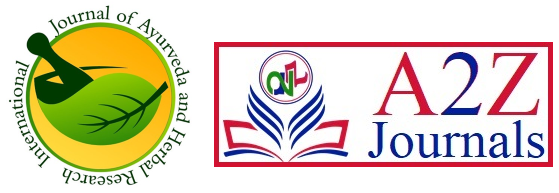Efficacy of Mashadi Upanaha Sweda in Niramavastha of Janusandhigata Vata- A Review
Borkar S.1*, Damle A.2
DOI: 10.54060/ijahr.v1i1.1
1* Susmita Borkar, Assistant Professor, Department of Panchakarma, Ashvin Rural Ayurveda College Manchi Hill, Sangamner, Ahmednagar, Maharashtra, India.
2 Anjali Damle, Assistant Professor, Department of Panchakarma, Tilak Ayurveda Mahavidyalaya, Rasta Peth, Pune, Maharashtra, India.
Abstract: Sandhigata Vata is form of Vata vyadhi mainly affecting knee joint (Janusandhi), because it is weight bearing organ of body. Due to day- to- day sedentary lifestyle and Vata prakop causes Doshavaigunya and Dhatuvaigunya. When the vitiated Vata aggravates in Janusandhi called as Janusandhigata vata. In Janusandhigata vata Shoola (pain), Shotha (swelling), Akunchana Prasaranayoho Savedana Pravrutti (pain during movements), Vatapurna druti sparsha (crepitus) of the joint are common clinical features. In Niramavastha of Sandhigata vata, dhatukshaya is a major event. Upanaha sweda or poultice application is one of the chikitsa described in the management of Sandhigatavata under samanya chikitsa sutra of swedana. Mashadi Upanaha sweda is of Guru, Snigdha, Brumhana, Vataghna by property, mixed with Masha,Godhuma, Devodar choorna,Kanji, Tilataila, Godugdha, Saindhava decrease vitiated Vata dosha and gives strength to the joints. This article is an initiation to study its efficacy of Mashadi Upanaha sweda in the management of Janusandhigatavata Niramavastha.
Keywords: Janusandhigatavata, Niramavastha, Mashadi Upanaha, Swedana
| Corresponding Author | How to Cite this Article | To Browse |
|---|---|---|
| , Assistant Professor, Department of Panchakarma, Ashvin Rural Ayurveda College Manchi Hill, Sangamner, Ahmednagar, Maharashtra, India. Copyright © 2023 The Author(s). Email: |
Susmita Borkar, Anjali Damle, Efficacy of Mashadi Upanaha Sweda in Niramavastha of Janusandhigata Vata- A Review. IJAHR. 2023;1(1):1-5. Available From https://ahr.a2zjournals.com/index.php/ahr/article/view/1/version/1 |


 ©
© 